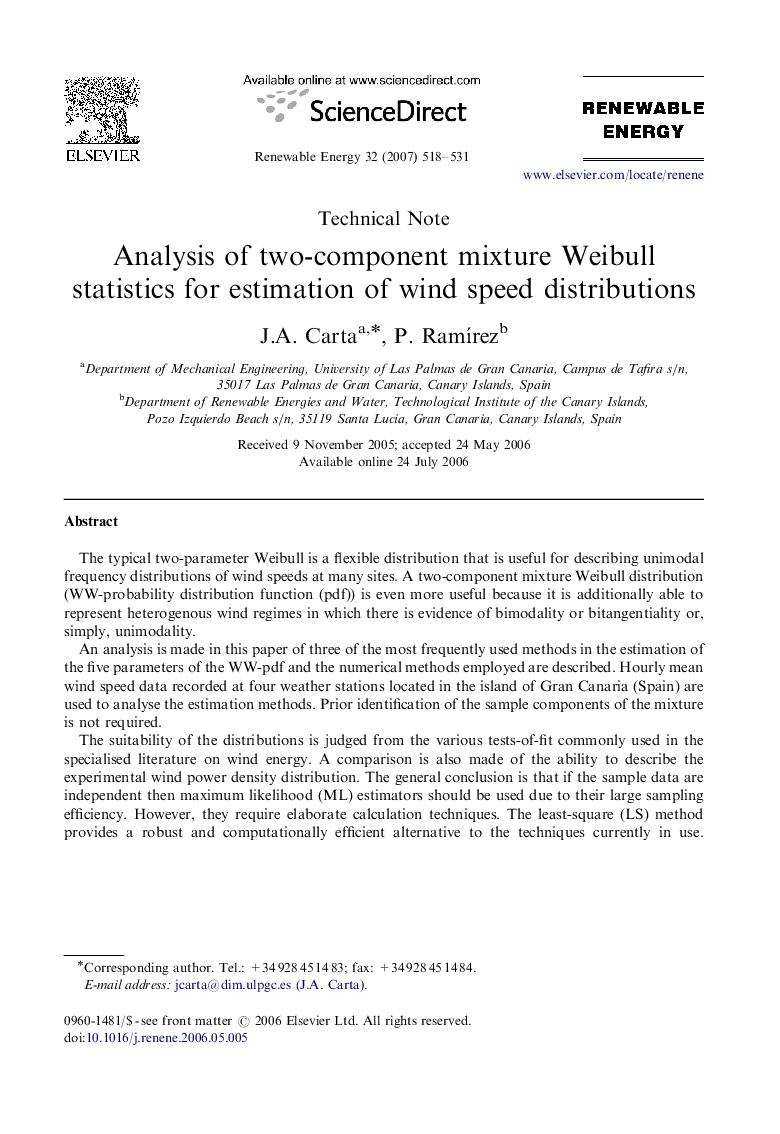| کد مقاله | کد نشریه | سال انتشار | مقاله انگلیسی | نسخه تمام متن |
|---|---|---|---|---|
| 303033 | 512571 | 2007 | 14 صفحه PDF | دانلود رایگان |

The typical two-parameter Weibull is a flexible distribution that is useful for describing unimodal frequency distributions of wind speeds at many sites. A two-component mixture Weibull distribution (WW-probability distribution function (pdf)) is even more useful because it is additionally able to represent heterogenous wind regimes in which there is evidence of bimodality or bitangentiality or, simply, unimodality.An analysis is made in this paper of three of the most frequently used methods in the estimation of the five parameters of the WW-pdf and the numerical methods employed are described. Hourly mean wind speed data recorded at four weather stations located in the island of Gran Canaria (Spain) are used to analyse the estimation methods. Prior identification of the sample components of the mixture is not required.The suitability of the distributions is judged from the various tests-of-fit commonly used in the specialised literature on wind energy. A comparison is also made of the ability to describe the experimental wind power density distribution. The general conclusion is that if the sample data are independent then maximum likelihood (ML) estimators should be used due to their large sampling efficiency. However, they require elaborate calculation techniques. The least-square (LS) method provides a robust and computationally efficient alternative to the techniques currently in use. The method of moments has the disadvantage that it does not always supply a feasible result and lacks the desirable optimality properties of ML and LS estimators.
Journal: Renewable Energy - Volume 32, Issue 3, March 2007, Pages 518–531